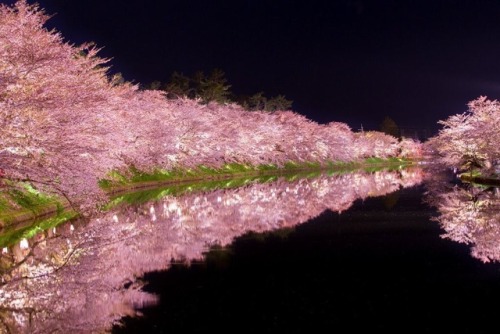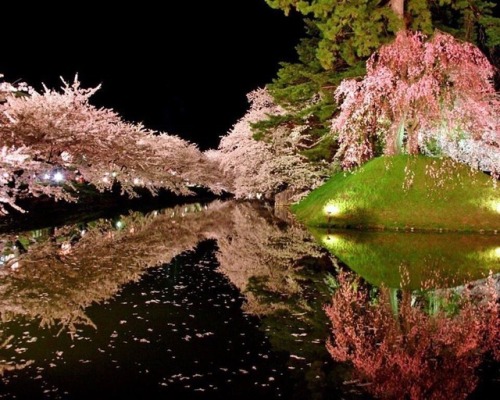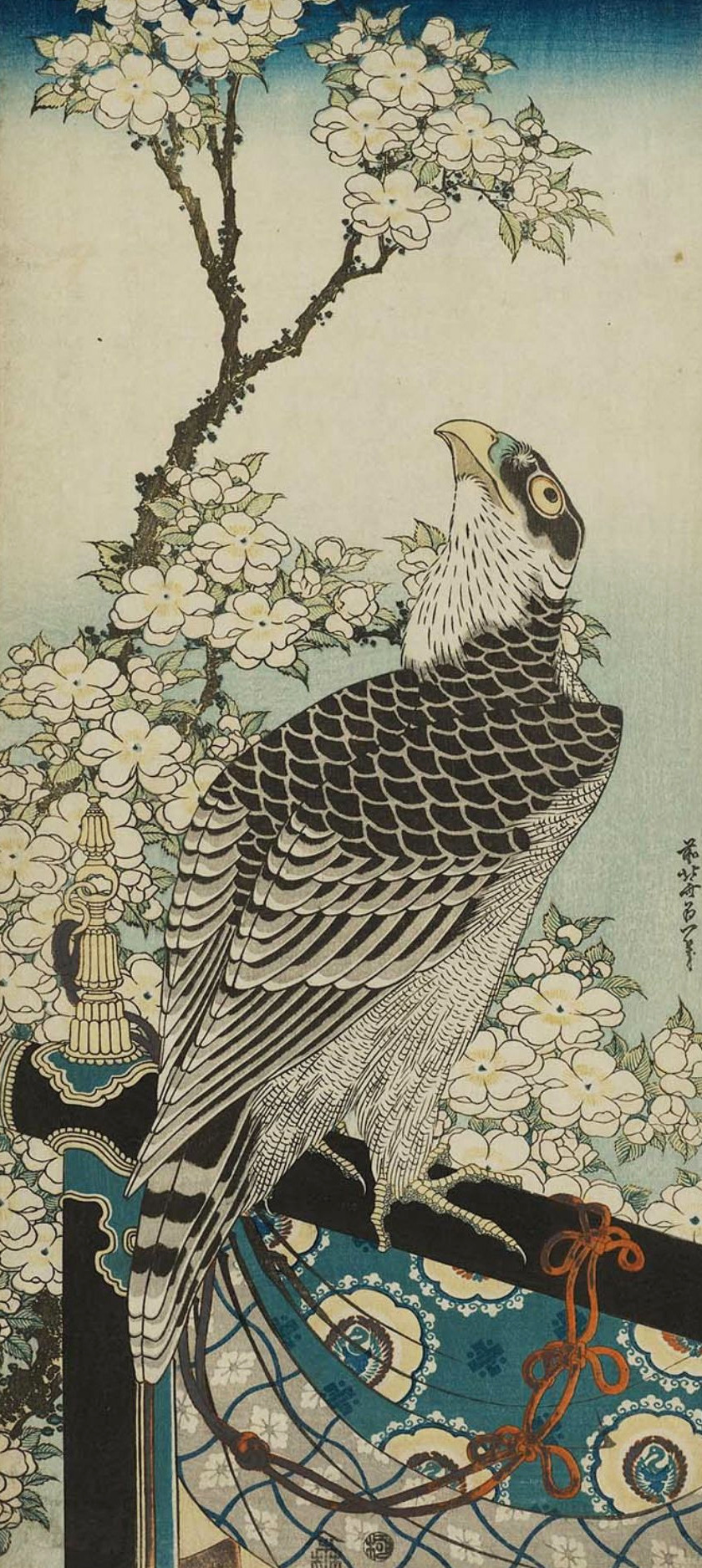Aomori Ken!!
Aomori ken!!




K1zz @xK1zz
青森県弘前市の日本一とも言われる桜です 今年で弘前桜祭りは100周年を迎えます 開催期間は4月22日~5月7日までなので皆様是非お越しください😃😃
More Posts from Ritasakano and Others

Tarde azulada Ossos que anunciam um calor fraco Luz que chega calmamente Um prelúdio com sons que triscam Em contraste ao branco frio.
Interessante!!



Sensation of Taste Is Built into Brain
Roast turkey. Stuffing. Mashed potatoes and gravy. Pie. Thanksgiving conjures up all sorts of flavors. If you close your eyes you can almost taste them. In fact, one day you may be able to—without food.
Scientists from Columbia University have figured out how to turn tastes on and off in the brain using optogenetics—a technique that uses penetrating light and genetic manipulation to turn brain cells on and off. They reported their findings in an article published in Nature. By manipulating brain cells in mice this way, the scientists were able to evoke different tastes without the food chemicals actually being present on the mice’s tongues.
The experiments “truly reconceptualize what we consider the sensory experience,” said Charles Zuker, head of the Zuker lab at Columbia and co-author on the paper. The results further demonstrate “that the sense of taste is hardwired in our brains,” Zuker said, unlike our sense of smell, which is strongly linked to taste but almost entirely dependent on experience.
Typically when we eat, the raised bumps, or papillae, that cover our tongues, pick up chemicals in foods and transmit tastes to the brain. There are five main types of papillae corresponding to each of the five basic tastes—sweet, sour, salty, bitter and umami. Contrary to popular belief, these aren’t clustered in particular places on the tongue, with bitter in the back and sweet at the front, but are spaced about evenly on the tongue.
A taste map may in fact exist, but it appears to be in the brain rather than on the tongue. First the researchers singled out the mice’s sweet and bitter taste centers in the brain, which are separated by approximately two millimeters in the insula. They concentrated on only sweet and bitter because the two are the most distinct from each other and also the most salient for humans, mice and other animals due their evolutionary importance to survival. Sweet usually indicates the presence of nutrients, whereas bitter signals potential danger of poison.
Zuker and his team then optogenetically stimulated the areas with light and in a series of behavioral tests, were able to have the mice taste sweet or bitter with only plain water. When the researchers activated the sweet neurons, they observed behavior consistent what with happens when mice normally encounter sweet foods: their licking increased significantly, even when the animals’ thirst was satiated. When the scientists stimulated neurons associated with bitter flavors, the mice stopped licking, seemed to scrub at their tongues and even gagged, depending on the level of optogenetic stimulation.
The researchers then performed the tests on animals that had never tasted sweet or bitter in their lives and found the same results. In the last set of experiments the researchers applied to the tongue of the mice chemicals that tasted sweet and bitter and compared their reactions to what happened when they simply stimulated the corresponding neurons optogenetically. There was no difference in the way the animals responded, “proving taste is hardwired in the brain,” Zuker said.
This doesn’t mean that there is no such thing as an “acquired taste,” Zuker clarified. For example, hákarl, fermented shark meat and national dish of Iceland, once called “the single worst, most disgusting and terrible tasting thing,” by famously acerbic food critic Anthony Bourdain is relished by many on the Nordic island nation. Humans are more complicated than mice. Taste can also be shaped by experience and culture. But the basics of this sensation are present from the beginning.
“Every baby smiles to sweet and frowns for bitter,” Zuker explained. “Taste mostly retains that hardwired response unless there is something that supersedes it. There are some things we consume [that] are innately aversive. But we take the gain with the bad if they have a positively reinforcing result.” Coffee or alcohol, for instance, are distinctly bitter, but many people learn to enjoy them over time due to the feelings of stimulation and inebriation they bring, respectively.
Gary Beauchamp, president of the Monell Chemical Senses Center in Pennsylvania, calls the research “a very clear and elegant approach,” confirming the long-standing hypothesis that taste is indeed evolutionarily hardwired. But Beauchamp also notes that sweet and bitter compounds can influence each other in the mouth to affect taste before they reach the brain. “In the real world, where foods are mixtures of things, it’s much more complex than what this study would suggest. Nevertheless, this is excellent work showing that these pathways are innately organized,” he said.
Zuker is aware that sweet and bitter are at the extremes of the taste spectrum and may not be representative of all tastes. But he expects similar results testing other tastes, which are also evolutionarily based. Salt, for example, signals electrolytes. “The next question is how activity in these cortical fields integrates with rest of brain,” to form experience and lasting taste memories – such as those we make at Thanksgiving.
Source: Scientific American
Lindas imagens!
The Beautiful Things inside Your Head: Winners of the 10th Annual Art of Neuroscience Contest
Winner: Lidija Kononenko

Artist Kononenko described this interactive piece as “a microscope specimen, a map of symptoms, and an investigation of the unknown” in a statement accompanying it. Viewers can zoom in and explore the details of a microscope image of the peripheral nerve system, which is overlaid by textual facts and poetic phrases about sleep.Sleep is “a voluntary act of losing one’s own consciousness,” Konenenko explained in her statement. The poetic snippets resemble the fragmented thoughts humans have while falling asleep. And zooming in and out of the image represents the transition between wakefulness and sleep. Additionally, 31-3594 allows the viewer to act as a pathologist, achieving the goal of blending neuroscience and art. In assessing this unique piece, the jurors praised it for “the interactivity and playful combination of imagery of a human peripheral nerve with a text-based story that unfolds at various scales and highlights the role of the nervous system in the human condition.”
Honorable Mentions

Red Haze by Nicki Coveña
A tsunami of red dots dominates this image by neuroscientist Coveña. The bright red color comes from a fluorescent protein, which was used to visualize the workings of TBR1—a gene that synthesizes the protein that regulates the information transfer from DNA to messenger RNA in vertebrate embryo development. “The out-of-focus view makes one guess at what details are hidden below,” the jurors wrote.

Motor White Matter Networks of the Human Brain by Sanja Budisavljevic
In this piece, neuroscientist Budisavljevic superimposed color onto a 19th-century black-and-white drawing of a brain based on a postmortem dissection. Each color indicates a different “highway,” or white matter pathway connecting particular regions of gray matter and allowing information to be transferred. Red indicates the most prominent highway, which links the cortex and spinal cord. “This pathway carries the messages to and from the body and allows us to function in our sensory world,” Budisavljevic says. Green represents the connection that supports coordination, and blue shows the one that regulates movements.

Bdl by Paméla Simard (Alex Tran, photographs)
Artist Simard partnered with Hunter Shaw, a neuroscientist then at McGill University, to create a series of delicate wooden sculptures. “The various installations were created from fluorescent microscopy images representing the visual system of the fruit fly brain,” Simard wrote in her statement. The intricate details of the fruit fly visual system were made possible by first laminating the thin slices of different types of wood together, then hand cutting the result to mimic the microscope images.
More Art from 2020 Gallery

Whale Retina Rainbow by Elena Vecino Cordero and Luis López Vecino
In February 2019 the death of a whale in Sopelana Beach in Spain made the local news. The beach happened to be close to the University of the Basque Country, where biologist Vecino Cordero works. Seizing the opportunity, she and some volunteers extracted the eye of the whale and took it back to her ophthalmology research group for further study. The image was produced as a part of their research. The whale’s retina was imaged using scanning electron microscopy. And later López Vecino added the colors using Adobe Photoshop.

Sensing Spin by Dan Jagger
Physiologist Jagger used a high-resolution microscope to capture this image. It shows mechanosensory hair cells located in the inner ear that play a role in the sense of balance. A protein called actin is within bundles of stereocilia and is stained yellow. Actin helps the bundles to stand upright, so when the human head turns, they can detect the movement of the fluid they are immersed in. The hair-cell nuclei are stained with cyan.

The Protection of Nature Starts in Our Mind by Robert Luck
Luck is a neuroscientist at Heidelberg University in Germany who studies the development of the cerebellum, located where the spinal cord meets the brain. Alarmed by climate change and deforestation, he created a “mind forest” that resembles bird’s-eye-view photographs of real forests. The “trees” are 65 individually traced images of mice’s Purkinje neurons, which play important roles in controlling coordination and movements. “I chose the number 65 to represent the number of years needed for the rainforest to regrow and gain back at least 80% of its diversity,” Luck wrote in his statement. “[Sixty-five] years—a human lifetime!”

Memories and Patterns: Oligodendrocytes by Shanthi Chandrasekar
Oligodendrocytes are glial cells that support and insulate long neuronal axons. The cells’ lipid membrane wraps around the axons to strengthen the structure, as well as to help neurons to send signals quickly. “A single oligodendrocyte can connect with multiple axons,” artist Chandrasekar wrote in her statement. “In this [pen-and-ink] drawing, I have tried to bring out the connectedness of the oligodendrocytes and the axons.”

Shelter in Place by Geinene Carson
As its title suggests, this piece represents “the artist’s interpretation of the pandemic experience” while sheltering in place because of COVID-19, according to artist Carson’s statement. This acrylic-on-canvas piece is a part of a series entitled Neuron, which started as “visual prayers for our daughter with a rare genetic disorder,” Carson wrote on her Web site. While Shelter in Place implies physical restrictions, Carson, who is based in Atlanta, draws inspiration from the neural network, “because as important as our physical surroundings are to our state of living, our thought life holds the key to thriving within whatever the circumstances may be,” she wrote.

Bridges between Genesis and Neuroscience: Triplets by Rui Rodrigues
This image features three neurospheres—clusters of neural stem or progenitor cells—that are similar in size and shape. Because of their similarity, neurobiologist Rodrigues entitled the piece Triplets. The vibrant colors come from “antibodies coupled with fluorescent tags to label specific proteins,” he says.

The Transfer by Geinene Carson

Motor Neuron Architectural Digest by Stefanie Hauck - University of Bonn

Illuminating The Vascular Network - EPFL by Marwan Abdellah
Empodere as mulheres!!
Japanese


Um olhar apenas.
O que será que os nossos olhos não enxergam?
NASA’s Fleet of Planet-hunters and World-explorers
Around every star there could be at least one planet, so we’re bound to find one that is rocky, like Earth, and possibly suitable for life. While we’re not quite to the point where we can zoom up and take clear snapshots of the thousands of distant worlds we’ve found outside our solar system, there are ways we can figure out what exoplanets light years away are made of, and if they have signs of basic building blocks for life. Here are a few current and upcoming missions helping us explore new worlds:
Kepler

Launched in 2009, the Kepler space telescope searched for planets by looking for telltale dips in a star’s brightness caused by crossing, or transiting, planets. It has confirmed more than 1,000 planets; of these, fewer than 20 are Earth-size (therefore possibly rocky) and in the habitable zone – the area around a star where liquid water could pool on the surface of an orbiting planet. Astronomers using Kepler data found the first Earth-sized planet orbiting in the habitable zone of its star.
In May 2013, a second pointing wheel on the spacecraft broke, making it not stable enough to continue its original mission. But clever engineers and scientists got to work, and in May 2014, Kepler took on a new job as the K2 mission. K2 continues the search for other worlds but has introduced new opportunities to observe star clusters, young and old stars, active galaxies and supernovae.
Transiting Exoplanet Survey Satellite (TESS)

Revving up for launch around 2017-2018, NASA’s Transiting Exoplanet Survey Satellite (TESS) will find new planets the same way Kepler does, but right in the stellar backyard of our solar system while covering 400 times the sky area. It plans to monitor 200,000 bright, nearby stars for planets, with a focus on finding Earth and Super-Earth-sized planets.
Once we’ve narrowed down the best targets for follow-up, astronomers can figure out what these planets are made of, and what’s in the atmosphere. One of the ways to look into the atmosphere is through spectroscopy.
As a planet passes between us and its star, a small amount of starlight is absorbed by the gas in the planet’s atmosphere. This leaves telltale chemical “fingerprints” in the star’s light that astronomers can use to discover the chemical composition of the atmosphere, such as methane, carbon dioxide, or water vapor.
James Webb Space Telescope

Launching in 2018, NASA’s most powerful telescope to date, the James Webb Space Telescope (JWST), will not only be able to search for planets orbiting distant stars, its near-infrared multi-object spectrograph will split infrared light into its different colors- spectrum- providing scientists with information about an physical properties about an exoplanet’s atmosphere, including temperature, mass, and chemical composition.
Hubble Space Telescope

Hubble Space Telescope is better than ever after 25 years of science, and has found evidence for atmospheres bleeding off exoplanets very close to their stars, and even provided thermal maps of exoplanet atmospheres. Hubble holds the record for finding the farthest exoplanets discovered to date, located 26,000 light-years away in the hub of our Milky Way galaxy.
Chandra X-ray Observatory

Chandra X-ray Observatory can detect exoplanets passing in front of their parent stars. X-ray observations can also help give clues on an exoplanet’s atmosphere and magnetic fields. It has observed an exoplanet that made its star act much older than it actually is.
Spitzer Space Telescope

Spitzer Space Telescope has been unveiling hidden cosmic objects with its dust-piercing infrared vision for more than 12 years. It helped pioneer the study of atmospheres and weather on large, gaseous exoplanets. Spitzer can help narrow down the sizes of exoplanets, and recently confirmed the closest known rocky planet to Earth.
SOFIA

The Stratospheric Observatory for Infrared Astronomy (SOFIA) is an airplane mounted with an infrared telescope that can fly above more than 99 percent of Earth’s atmospheric water vapor. Unlike most space observatories, SOFIA can be routinely upgraded and repaired. It can look at planetary-forming systems and has recently observed its first exoplanet transit.
What’s Coming Next?
Analyzing the chemical makeup of Earth-sized, rocky planets with thin atmospheres is a big challenge, since smaller planets are incredibly faint compared to their stars. One solution is to block the light of the planets’ glaring stars so that we can directly see the reflected light of the planets. Telescope instruments called coronagraphs use masks to block the starlight while letting the planet’s light pass through. Another possible tool is a large, flower-shaped structure known as the starshade. This structure would fly in tandem with a space telescope to block the light of a star before it enters the telescope.
All images (except SOFIA) are artist illustrations.
Make sure to follow us on Tumblr for your regular dose of space: http://nasa.tumblr.com
-
 mriskies reblogged this · 1 month ago
mriskies reblogged this · 1 month ago -
 sewerelk liked this · 2 months ago
sewerelk liked this · 2 months ago -
 yuyaeguchi liked this · 3 months ago
yuyaeguchi liked this · 3 months ago -
 pyromon reblogged this · 5 months ago
pyromon reblogged this · 5 months ago -
 shiki-soku-ze-kuu reblogged this · 8 months ago
shiki-soku-ze-kuu reblogged this · 8 months ago -
 catsundmaus reblogged this · 9 months ago
catsundmaus reblogged this · 9 months ago -
 managedorphan-9 reblogged this · 10 months ago
managedorphan-9 reblogged this · 10 months ago -
 tamutamu5674 liked this · 10 months ago
tamutamu5674 liked this · 10 months ago -
 0range-juicey liked this · 10 months ago
0range-juicey liked this · 10 months ago -
 seashellsandsand reblogged this · 10 months ago
seashellsandsand reblogged this · 10 months ago -
 teo173 liked this · 10 months ago
teo173 liked this · 10 months ago -
 ma55x liked this · 10 months ago
ma55x liked this · 10 months ago -
 jerzee55z liked this · 10 months ago
jerzee55z liked this · 10 months ago -
 baldnangry reblogged this · 10 months ago
baldnangry reblogged this · 10 months ago -
 baldnangry liked this · 10 months ago
baldnangry liked this · 10 months ago -
 originaljuan67 liked this · 10 months ago
originaljuan67 liked this · 10 months ago -
 the-fool-darkane85 reblogged this · 10 months ago
the-fool-darkane85 reblogged this · 10 months ago -
 the-fool-darkane85 liked this · 10 months ago
the-fool-darkane85 liked this · 10 months ago -
 morrovvinds liked this · 10 months ago
morrovvinds liked this · 10 months ago -
 hannibalcatharsis liked this · 10 months ago
hannibalcatharsis liked this · 10 months ago -
 momo-noki liked this · 10 months ago
momo-noki liked this · 10 months ago -
 childerinys reblogged this · 10 months ago
childerinys reblogged this · 10 months ago -
 pinksoda69 liked this · 10 months ago
pinksoda69 liked this · 10 months ago -
 maijacarr liked this · 10 months ago
maijacarr liked this · 10 months ago -
 lunar--womb reblogged this · 10 months ago
lunar--womb reblogged this · 10 months ago -
 nekogarfield reblogged this · 10 months ago
nekogarfield reblogged this · 10 months ago -
 koshigurajumy liked this · 10 months ago
koshigurajumy liked this · 10 months ago -
 death-by-dumpling reblogged this · 10 months ago
death-by-dumpling reblogged this · 10 months ago -
 death-by-dumpling liked this · 10 months ago
death-by-dumpling liked this · 10 months ago -
 shogun0531 liked this · 10 months ago
shogun0531 liked this · 10 months ago -
 siki-soku-zekuu reblogged this · 10 months ago
siki-soku-zekuu reblogged this · 10 months ago -
 siki-soku-zekuu liked this · 10 months ago
siki-soku-zekuu liked this · 10 months ago -
 corgiboobs liked this · 10 months ago
corgiboobs liked this · 10 months ago -
 careful-knives reblogged this · 10 months ago
careful-knives reblogged this · 10 months ago -
 juliusyoo liked this · 10 months ago
juliusyoo liked this · 10 months ago -
 summersquashpatch liked this · 10 months ago
summersquashpatch liked this · 10 months ago -
 lunar-solaris liked this · 10 months ago
lunar-solaris liked this · 10 months ago -
 deathblossomed reblogged this · 10 months ago
deathblossomed reblogged this · 10 months ago -
 maliceandvice reblogged this · 10 months ago
maliceandvice reblogged this · 10 months ago -
 adora08phoenix reblogged this · 10 months ago
adora08phoenix reblogged this · 10 months ago -
 adora08phoenix liked this · 10 months ago
adora08phoenix liked this · 10 months ago -
 daddywolfex liked this · 10 months ago
daddywolfex liked this · 10 months ago -
 catsundmaus liked this · 10 months ago
catsundmaus liked this · 10 months ago -
 tr1p1tas reblogged this · 10 months ago
tr1p1tas reblogged this · 10 months ago -
 mriskies liked this · 10 months ago
mriskies liked this · 10 months ago -
 wandering-cynic reblogged this · 10 months ago
wandering-cynic reblogged this · 10 months ago
